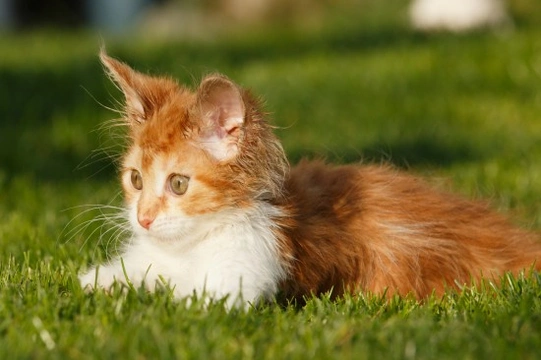
How Do Cats Learn Things?
Our feline friends are quite extraordinary creatures and they bring their owners lots of pleasure. Being able to decode and understand just what makes a cat tick is not just fascinating, but it gives owners an insight into why felines do what they do. This in turns helps owners make the right kind of decision when it comes to caring for their pets. Understanding why cats do things also helps reinforce and/or form a strong bond with them and the results can be very rewarding.
Cats Learn Things in a Variety of Ways
Cats learn things in all sorts of different ways, a couple of which is through association and habit. If their owners like to sit and watch television in the evening and their feline friends routinely sits on their laps when they do, over a period of time this will become what the cat expects. However, if one evening their owner decides to read the newspaper or a book, pussy cat might not agree with the change in their routine and quite happily sit on the newspaper in such a way that their owners can't read it!
If you are familiar with this scenario, you would probably decide to get up and move away or give your cat their food as a way of distracting them. However, the next time you try to sit and read the newspaper, your little furry friend will insist on sitting on the newspaper – and will do so every time. While many cat owners will emphasise with this situation, what they may not realise is just how much their cat has learnt in the process.
The first thing cats learn being that if they sit on a newspaper, they get rewarded with a much better treat than being stroked namely in the form of a nice dish of food. When the cat spots the newspaper the following day, they know that by sitting on it they would get fed. Without realising it, many cat owners inadvertently teach their pets that certain behaviours result in a positive and tasty consequence.
What are the Benefits of Training a Cat?
When it comes to training a cat this typically involves owners training themselves as much as they do their feline companions. In general, cats find certain things and situations quite stressful and this includes being put in a pet carrier, having to travel in a car, being taken to the vet and having to be given any sort of medication to name just a few of things that cats often have to do at some stage of their lives and which they are not particularly fond of.
Knowing how cats learn thing helps owners understand ways they can positively influence what their pets actually learn and therefore how they react to these situations. This, in turn helps improve your cat's overall welfare. Knowing how to adapt things and making little changes, allows cat owners to make a stressful situation like being put into a cat carrier a much more positive experience all round and not one that sends your pet into a feline frenzy.
The Different Ways that Cats Learn Things
Cats are constantly learning new things even if their owners don't realise it and the thing to bear in mind is that our feline friends are very fast learners indeed. All too often one single experience is enough, although repetition just reinforces what they have been taught (intentionally or not). Cats will naturally develop both a negative or a positive association with what they learn and they do so using pretty much the same principals which include the following:
- Habituation – this typically involves things found in their environment which are irrelevant to a cat
- Sensitisation – this generally is a process whereby a cat is repeatedly exposed to a situation or something which eventually leads to more of a reaction from the cat
- Classic conditioning – this involves reccurring situations and things found in an environment which leads to something else happening whether good or bad
- Operant conditioning – this happens continuously and involves a consequence to certain behaviours that then influence a following behaviour
- Observational learning – this involves learning things from other cats which both kittens and adults routinely do
Conclusion
Our feline friends learn new things in various ways and if you understand how this is achieved, pet owners can influence the way their pets react to certain situations. Difficult and stressful things can become something a cat takes in their stride rather than something they fear and get anxious about. This includes having to go in a cat carrier, travel in a car, being handled by a vet and being given their tablets. However, it is up to owners to make the necessary changes in their own behaviour as well and to understand the consequences of what they do and how their actions may impact their feline companions.



